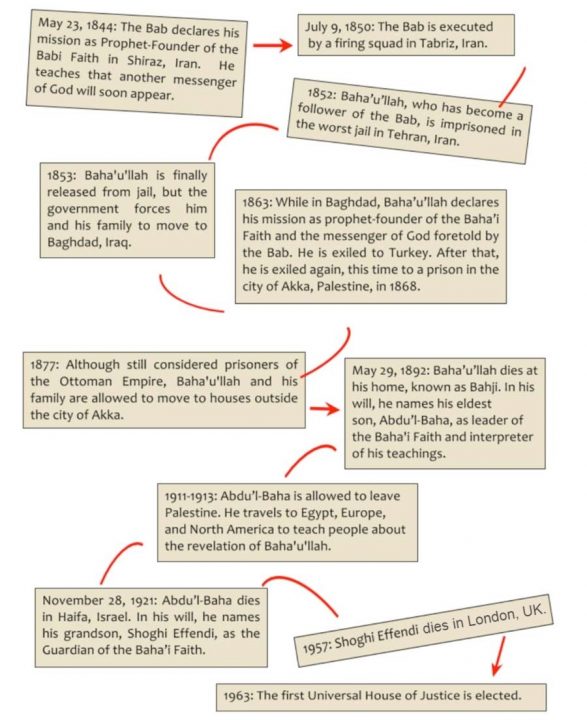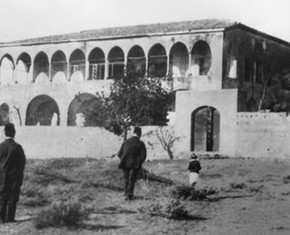The views expressed in our content reflect individual perspectives and do not represent the authoritative views of the Baha'i Faith.

One of the challenges in learning about the Baha’i Faith is figuring out the general timing of events. How did this relatively new Faith grow and evolve?
For those interested in the details, you could read Glenn Cameron’s and Wendi Momen’s A Basic Baha’i Chronology, a whole book with a sentence or two about several days in each month between 1753 and the middle of 1996. However, while working on a book about the Baha’i Faith for middle school readers, I’ve become more interested in creating an extremely condensed timeline of Baha’i-related events, complete with boxes and arrows. You’ll see it at the bottom of this page.
In October of 2017, Baha’is around the world will celebrate the 200th anniversary of the birth of Baha’u’llah, the prophet and founder of the Baha’i Faith. However, the major historical events of the Baha’i Faith began more than a century ago. As you examine the timeline, you will notice several important names.
The first name is the Bab, a Persian word that means Gate. The Bab was born in 1819 in Shiraz, Iran. His mission from God was to bring a new religion—the Babi Faith—which would prepare people for a second divine teacher who would come just a few years after the death of the Bab. Because the leaders of Iran did not like the Bab’s new religion, they executed him in 1850.
The second name you will see on the timeline is Baha’u’llah, born in 1817 in Tehran, Iran. His name means the Glory of God, and he was the messenger of God foretold by the Bab. Baha’u’llah founded the Baha’i Faith. His life was very difficult because the leaders of Iran did not appreciate the spiritual truth of his revelation. They tortured, imprisoned, and repeatedly exiled Baha’u’llah.
The third name is Abdu’l-Baha, which means “the Servant of the Glory.” He was the son of Baha’u’llah, and dedicated his life to helping his father teach people about the Baha’i Faith. In Baha’u’llah’s will, Abdu’l-Baha was appointed as the leader of the Baha’i Faith and the interpreter of Baha’u’llah’s teachings.
The fourth name is Shoghi Effendi, the great-grandson of Baha’u’llah and the grandson of Abdu’l-Baha. He was still a student at Oxford University when Abdu’l-Baha passed away in 1921, and was stunned to learn that he had been appointed as the Guardian of the Baha’i Faith in his grandfather’s will.
The fifth and final name is the Universal House of Justice, a council of nine men, democratically elected every five years, that is responsible for guiding the Baha’is of the world. Indeed, one of the most interesting things about the Baha’i Faith is how this continuing line of authority was clearly delineated from generation to generation until the governing body originally envisaged by Baha’u’llah–the Universal House of Justice–could finally come into being.
Inasmuch as for each day there is a new problem and for every problem an expedient solution, such affairs should be referred to the Ministers of the House of Justice that they may act according to the needs and requirements of the time. – Baha’u’llah, Tablets of Baha’u’llah, p. 26.
Since the Bab’s time, the Baha’i Faith has grown rapidly and spread around the entire world. Its new teachings—the unity of all humanity, the essential harmony of all religions and the oneness of world’s nations—have permeated the consciousness of humankind.
You May Also Like
Comments

















is correct